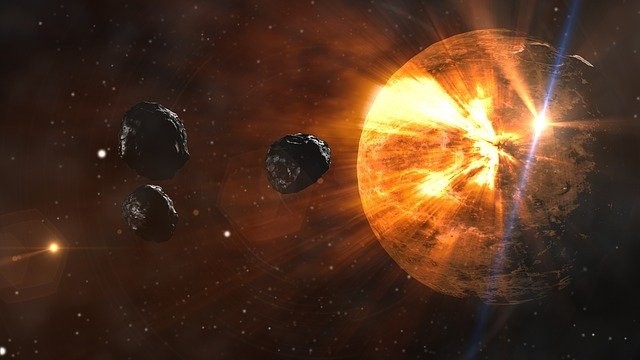
The National Aeronautics and Space Administration (NASA) first confirmed asteroid BQ11's presence in the solar systemon January 22. The space organization has tracked the space stone's direction by February 6.
The observations made by the trackers allowed NASA to determine the qualities of the asteroid including its size, speed, and orbit. The trackers also determined that the asteroid with a speed of 47,557 mph was flying towards Earth.
Amid the fears that the ti may cause a world-ending event, according to Express UK, NASA also determined that the asteroid is a Near-Earth Object (NEO).
According to Planetary Society's Dr. Bruce Betts, an NEO is an asteroid or comet that comes exceptionally close to Earth or within 50 million km of the planet's orbit and is considered to be possibly dangerous to earth.
NEOs are further classified to NECs or Near-Earth Comets and NEAs or Near-Earth Asteroids. However, more NEAs approach the Earth compared to NECs which happens or appear only once in a while.
NASA and other space agencies like the European Space Agency (ESA) keep a close eye on NEOs like BQ11 to keep the planet safe from possible cataclysm.
Once an asteroid is within 4.5 million miles from the planet, and is at least 460 feet, astronomers consider it as a Potentially Hazardous Asteroid or PHA.
Asteroid BQ11 is estimated by NASA to be around 111ft to 252.6ft across which is comparable to a Boeing 747 aircraft's wingspan or is about four times as long as a London Double Decker Bus.
NASA, however, says that the asteroid only approached the planet at a distance of about 0.03614 astronomical units (au), a single astronomical unit is equal to the planet's distance from the sun or about 93 million miles. Thus, Asteroid BQ11 only came at least 3.36 million near Earth's orbit.
According to Digital Weekly, the asteroid already flew past Earth, last Saturday. BQ11 is not the only asteroid that came close to the planet this weekend. In fact there are 3 other space rocks that came close to Earth's orbit which are the 2020 BL8, 2020 BW5, and 2020 BK10.
The 2020 BL8 has an estimated 138ft diameter and travels at about 7,000 miles per hour and approached the planet at a distance of approximately 1.6 million miles. While the 2020 BW5, measured around 102 feet and is traveling through the solar system at over 20,000 miles per hour.
The asteroid was about 1.2 million miles from the orbit when it reached it's closest to the planet. The fourth asteroid called the BK10 was indicated to be atleast 114 feet and flew towards the planet at a speed of 26,000 miles per hour and approached the planet with the closest distance amongst the four with a distance of only 455,000 miles.
NASA continues to monitor these Near-Earth Objects that approach in order to prepare ourselves for events of hits that may cause an end of the world event through the Planetary Defense Coordination Office.
© 2025 HNGN, All rights reserved. Do not reproduce without permission.








